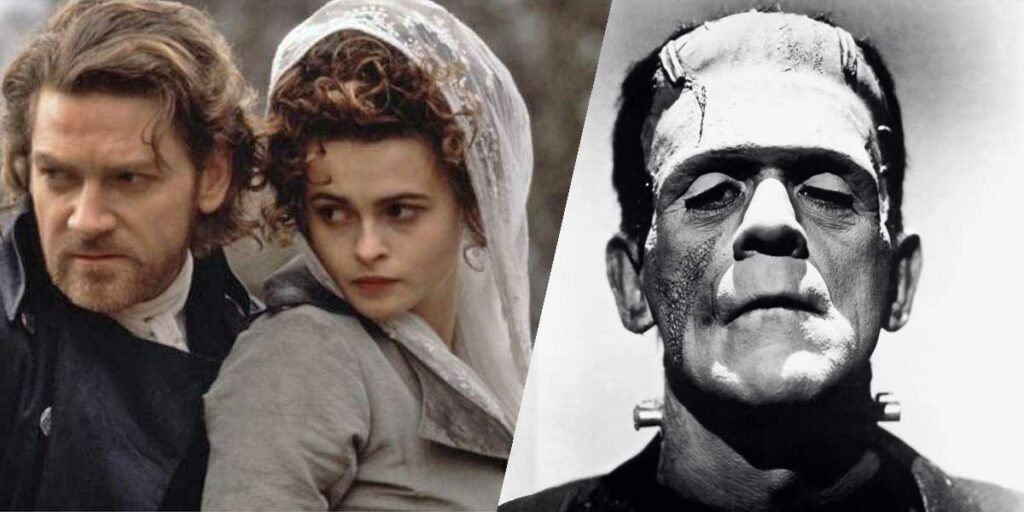James Whale’s Frankenstein movies are beloved classics, but Kenneth Branagh’s Mary Shelley’s Frankenstein takes a different look at adapting the same story.
What comes to your mind when you hear the name “Frankenstein?” The answer is most likely a tall, green man with a large, square forehead and bolts in his neck, stumbling around and mumbling like a zombie, or me after an hour-long work meeting. While Mary Shelley’s groundbreaking 1818 novel of the same title is where the name “Frankenstein” was born, the iconography that’s widely associated with the name comes from the James Whale-directed 1931 classic, Frankenstein.
The film about scientist Henry Frankenstein (Colin Clive) who creates a living man-like creature (Boris Karloff) out of dead parts has been ingrained in popular culture for almost a century. As has Whale’s 1935 sequel, Bride of Frankenstein, which continues the story with the monster gaining intelligence and demanding Frankenstein build him a wife. These are both amazing movies filled with dread, cruelty, filmmaking well ahead of their time, and dire warnings about reckless creation and what makes something a monster, taking the original story and giving it a whole new life of its own.
But what many people don’t seem to know is that not only is Shelley’s book different in many ways, but there’s an adaptation out there that represents the source material much more accurately: the 1994 Kenneth Branagh film, Mary Shelley’s Frankenstein. This version makes its own changes, but from an aesthetical and plot perspective, it’s generally considered the most faithful adaptation of Frankenstein ever put to film. But even if you’re like me and don’t consider faithfulness important in adaptations, this still also means it’s different enough from the Whale films to be its own entity and provide a new cinematic look at the same classic story.
In Mary Shelley’s Frankenstein, director Kenneth Branagh stars as Victor Frankenstein, a privileged man whose mother dies giving birth to his brother. Haunted by this event, he dedicates his university life to seeking ways to prolong life and override death. This leads him to piece together and bring to life a new, primitive human creature, played by Robert De Niro … yes, Robert De Niro once played the Frankenstein monster, and few people seem to know or remember it. When the creature escapes, he gains intelligence and seeks revenge on Frankenstein, also putting Victor’s adopted sister and fiancée Elizabeth (Helena Bonham Carter) at risk.
Just from that summary, those who know the Whale film will notice a few changes made by the 1994 adaptation. But the differences go further than that and make for two very different beasts that deserve to be looked at side-by-side. And because Frankenstein and Bride of Frankenstein work together to adapt the same material that Mary Shelley’s Frankenstein covers, I’ll also include Bride of Frankenstein when making these comparisons.
FRANKENSTEIN HIMSELF
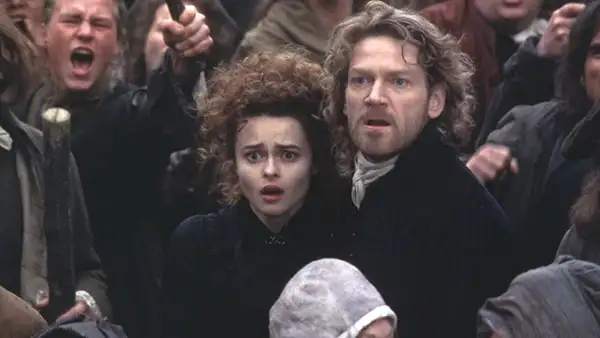
One of the biggest differences between the 1930s Frankenstein movies and the 1994 film is the portrayal of Frankenstein himself. Who, of course, is the scientist and not the monster, but I’m sure no one’s ever confused the two. James Whale’s Henry Frankenstein is mostly a straightforward mad scientist, though he certainly has dimension. Colin Clive brings a lot of crazed energy and a careless desire for intellectual power that make you believe he’d want to go through with such an extreme set of experiments, and the fact that you don’t know how he got to that point arguably makes him scarier as a character.
But Branagh’s Victor Frankenstein combines that same manic, almost psychotic vision with a more personal look at how he got there, and we see much more of his life and motivations leading up to the monster’s creation. He’s an energized dreamer with great ambitions and passionate emotions, and he’s shown experimenting in ways that will help him make his creature with a mind that’s clearly ahead of its time. But this turns out to be dangerous after the death of his mother, which traumatizes him and is clearly a critical part of his desire to create life. Even though he states that he wants to do it for all of mankind’s benefit, that much more selfish motivation is never lost on us.
This backstory, which is also in the book (though slightly altered), adds an extra layer to both Victor as a character and the story’s broader warning about what drives us to play God and how emotionally unprepared we are to recklessly wield such power. Overall, I consider him the more interesting character compared to Clive’s version, as much as I love both. But even if you believe less is more when it comes to the character’s history, the unique qualities in Branagh’s version of Frankenstein already make his adaptation stand out from Whale’s iconic classics.
Frankenstein’s relationship with Elizabeth is also more developed in the 1994 film. While both iterations have her as the concerned fiancée who grows fearful of her lover’s obsessions, the Branagh adaptation spends extra time to show the couple interacting and being in love. Their chemistry, while able to put a dairy farm to shame with all its cheesiness, is still believable within this more heightened world, which makes it more painful to see him shut her out. The added dimension also makes another lesson in the story much more prominent: while Victor is seeking ways to prolong and resurrect the lives of himself and his loved ones, he’s making those very same lives worse, illustrating how it’s the quality of life that should matter, not the longevity.
My only major qualm with Victor as a character is how abruptly he decides to give up on his dream once his creation “fails” him. In the 1931 film, Frankenstein regrets the monster he’s made, but he still hopes to keep his project going. In Mary Shelley’s Frankenstein, Victor instantly shuts the entire operation down and doesn’t look back until he’s forced to. That’d be like if I dropped out of college because I failed my first exam, except college is probably more expensive than the experiments in this story. But we thankfully see that Branagh’s Frankenstein still hasn’t fully learned his lesson when he makes a terrible choice near the end, one that brings the conflict of preserving life versus making life valuable full circle in the most destructive way possible. It’s not a perfect road, but the 1994 film gets the character where he needs to go very well.
FRANKENSTEIN’S CREATURE
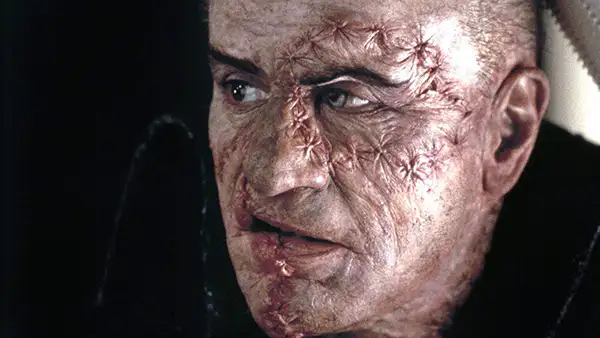
On the other side of the coin for both adaptations, we have the creature himself. He’s undeniably the most remembered and instantly recognizable part of the original Whale movies, and not just because of the design. Boris Karloff’s portrayal in Whale’s adaptations is drenched with simplistic brutality and haunting sadness, presented as a newborn child with the size and abilities of a grown adult. He’s not always trying to harm others, but he could do something terrible at any moment whether it’s due to him being set off or just not knowing what he’s doing. Almost no one taught him what he should or shouldn’t do, making him more of a tragic monster even when he learns how to speak and develops his emotions.
The 1994 monster works somewhat the same way, but he’s presented differently. From the offset, the characteristics that make him a “monster” are much more understated, and Robert De Niro portrays him as initially much more of a pitiful person as he flees from his lab and lives in solitude. He still feels very primitive at first, but there’s more of a tangible humanity to him. You’d think that would make him less sympathetic, but unlike in the Whale films where the creature commits terrible acts and then invokes the town’s wrath, Branagh’s version sees them attack him just for his appearance and more trivial crimes. There’s also a plague outbreak in the ’94 film, so the creature’s sickly appearance makes him even more of a target … though having just lived through a pandemic myself, I’d still fear him less than an anti-vaxxer.
Speaking of his appearance, De Niro’s creature forgoes the classic green skin and neck bolts in favor of looking like … well, an actual dead person that was stitched together. His skin is pale, his lip is forcibly pulled up, and his face is littered with sutures and stitches. And believe it or not, this is mostly what he looks like in the book as well. The Boris Karloff monster’s appearance is the major deviation. While I do like Karloff’s portrayal a bit better largely thanks to the directing and acting, the De Niro version visually conveys its own form of vulnerability, which makes you still feel sorry for him and saddened when he becomes the very thing he’s seen as: a murderous monster.
The same goes for how he ends up speaking when he’s gained more intelligence: Karloff’s monster maintains a simplistic vocabulary while De Niro’s becomes as well-spoken as Frankenstein himself. This is also how the book goes, and it intriguingly puts the creator and its creation on much more equal ground as they confront one another. In Bride of Frankenstein, the creature relies on the much smarter scientist Dr. Pretorious (Ernest Thesiger) in forcing his creator to build him a mate. In Mary Shelley’s Frankenstein, the creature himself is able to take all of the initiative in demanding his bride, leading to a conversation between him and Frankenstein that’s filled with some of the most potent and chilling lines I’ve heard in any monster movie.
Whatever film version you watch, there’s a tradeoff. In the book and the Branagh adaptation, I really like how the creature has not only learned how to communicate like a natural-born human being, but he’s gained the more personal vindictiveness of one. He’s become a man, but with that come all the frailties of man like vengeance and deception. The Whale adaptations have this too, but it’s much more pronounced in the 1994 film. But on the other hand, there’s something more pitiful to how much more malleable Karloff’s monster is because of his more primal nature. Even when he gains intelligence, he’s still misused and seen as a tool for someone else’s gain. Once again, I lean towards the changes made by the James Whale films, but I also acknowledge the greatness in Branagh’s adaptation.
THE STYLE AND TONE OF BOTH MOVIES
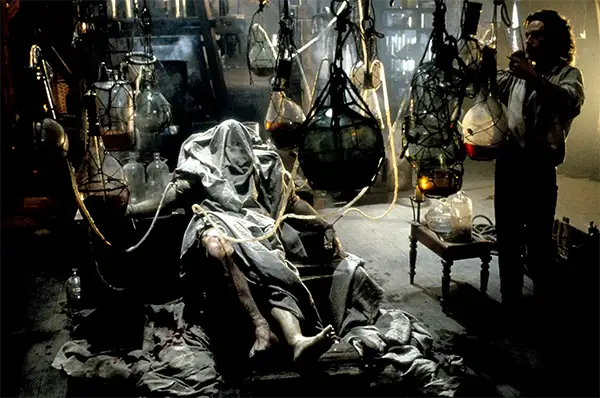
The James Whale movies play more into the spirit of a science fiction creature feature, while Kenneth Branagh leans more into the vibe of a period piece drama … y’know, just with undead monsters and a shirtless Kenneth Branagh fighting a naked, wet Robert De Niro. That kind of period piece drama. Mary Shelley’s Frankenstein moves at a very brisk pace and is filled with extravagant sets and flashy, kinetic camera angles that show them off at a mile a minute. Whale keeps everything slower and more suspenseful, drenching his sets with harsh shadows that match the films’ gothic tone. You can often tell you’re looking at film sets in the 1930s films, but they’re very impressive and striking film sets that get the dreary, mean-spirited mood across perfectly.
If you know my tastes, you could probably correctly guess that I prefer the older films’ style, but that doesn’t mean I don’t think Branagh’s also works. With how much boundless energy his Victor Frankenstein has, it makes sense to have Roger Pratt’s cinematography match that, especially with how much more elaborate the production design is. The Branagh adaptation fits its 1700s setting by basking the film in grainy light and similar patches of darkness that make everything look and feel both rugged and polished. It’s an old-fashioned look that makes the film feel timeless.
Because Mary Shelley’s Frankenstein also takes place during a plague, it’s able to provide a sharp visual contrast between the luxurious lifestyle Frankenstein and his family lead and the more raggedy slums that are in plain sight as we go out into the streets. Almost every shot has something interesting going on in the background, but not to the point of distracting from the characters in focus. Victor’s laboratory alone is packed with so much elaborate detail, showing how extensively the character worked to put it all together and making the notion of such advanced science in that era come across as surprisingly believable. Branagh’s always been a grand, showy director, and he definitely plays to his strengths here to convey as much through visuals as he does through theatrical dialogue.
That’s not to say neither adaptation dabbles in the other end of the spectrum. Mary Shelley’s Frankenstein definitely has its slower, more somber scenes, especially when the creature is learning to read and write while secretly living with a family in the woods. And Whale’s films have their faster, more urgent sequences, like the creation of the bride of Frankenstein that’s some of the most unnerving tension in any film climax. Whale’s scenes just aren’t flashy or flowing, despite still looking great even today, and Branagh has more of an edge in terms of details. Branagh also has an advantage in the form of Patrick Doyle’s vividly operatic, string-driven music that keeps your adrenaline up as much as it makes your blood run cold. It’s one of the most underrated film scores ever as far as I’m concerned.
WHERE MARY SHELLEY’S FRANKENSTEIN FALTERS
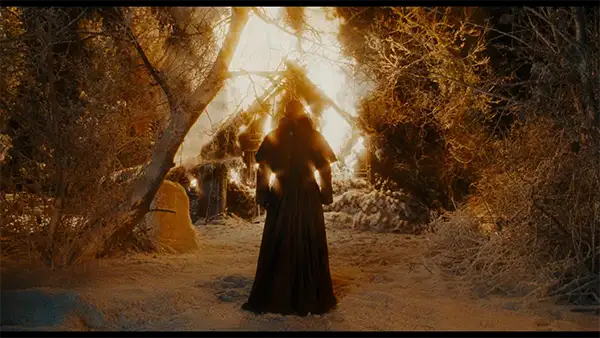
With how much I’ve praised Mary Shelley’s Frankenstein, you may be wondering why it’s so much less well-known than it sounds like it should be. Well, the critical reception certainly didn’t help; though not universally panned, the reactions to Kenneth Branagh’s adaptation were generally mixed to negative. Even the screenwriters, including Frank Darabont of The Shawshank Redemption fame, have denounced the finished product. And I can understand why for one major reason: the film is beyond hammy.
The performances from Branagh and Helena Bonham Carter can get comically melodramatic, and the lines they spew out are sometimes just as goofy. Though in all fairness, what would you expect a guy who devotes so much time and resources into creating a living human being would be like? And what would you expect someone who’s romantically drawn to that kind of person would be like? Colin Clive’s Frankenstein was definitely eccentric too, after all; Branagh just pushes that to new, more Shakespearean extremes that may or may not work for people. I could buy what he’s going for within the tone of the whole film.
But even for me, the exaggerated nature of Branagh’s vision sometimes gets pushed too far. Victor’s mother’s death is shown briefly, but it’s so off-putting and in-your-face disgusting that it almost comes across as humorous. If you think The Room has the most awkward and melodramatic sex scenes ever filmed … it probably still does, but Mary Shelley’s Frankenstein is in the running for a few of Victor and Elizabeth’s scenes. It doesn’t help that they repeatedly refer to the fact that they’re brother and sister. Sure, they’re adopted brother and sister, but when they say that to each other while making out, you’re gonna start thinking about siblings going at it. And for most of us, that’s just wrong.
Branagh’s adaptation also contains the climactic decision I alluded to earlier that, without giving anything away, sort of combines the endings of the book and Bride of Frankenstein. I can see a lot of people hating this choice, but I personally love it. It’s sick, twisted, depressing, and the clearest indicator of how much of Victor’s scientific ambitions were always fueled by his own delusional selfishness, even when he knows the dangers of tampering with life and death. With that said, the execution still has elements of cartoon logic that sucks me out of it a little. All I’ll say is, Frankenstein must douse his place in gasoline for it to make any sense.
But in all fairness, it’s not like the Whale movies never have their goofy moments. I mean, they were made in the 1930s, so some awkwardly theatrical acting is practically a given. But in Mary Shelley’s Frankenstein, Victor uses a professor’s brain for his creature along with the body of a hanged murderer. This further blurs the line of how much one’s genetic makeup informs who a person is as opposed to how they’re brought up. In 1931’s Frankenstein, the brain is literally labeled “abnormal” and only taken when the other “normal” brain is destroyed. That’s something I’d expect to see in Young Frankenstein, not a serious version of the story. And what about those miniature humans Dr. Pretorious creates in Bride of Frankenstein? That’s … just plain silly.
FAITHFUL ADAPTATIONS VS. IMPROVEMENTS
Honestly, for all the changes they make to the source material, I think the Whale films overall improve on Mary Shelley’s novel. With Bride of Frankenstein in particular, so many more layers are added in regards to what happens when a creation gets out of the creator’s control, and the more animalistic nature of the creature adds to his sympathy and raises even more questions regarding what makes something human. I’ve always believed that adaptations can make as many changes as they want as long as they still work as their own stories, and it’s films like Whale’s that should remind people of that. Even if someone has their own way of adapting a story or character that seems too different or “disrespectful,” they should still be given a shot. There’s no reason to lock these tales in boxes.
But Mary Shelley’s original novel has been revered for centuries for a reason: it’s still a great story, and that greatness is still captured by Kenneth Branagh’s adaptation. Its production and music are huge and fantastic, the performances are campy but still genuine, and the film asks us to second-guess our ambitions in ways that are both similar and different to the Whale films. It is as good as those 1930s classics? No. Does the style sometimes get in the way of the substance? Sure. But Branagh still crafted a version with its own unique identity, one that’s absolutely not for everyone but must have an audience that can embrace it. Whether you want a quieter, more grounded retelling or something with more bombastic flair, there’s a great version out there that keeps the story’s twisted magic alive.
James Whale’s Frankenstein and Bride of Frankenstein and Kenneth Branagh’s Mary Shelley’s Frankenstein are now available to watch on digital and on demand.

